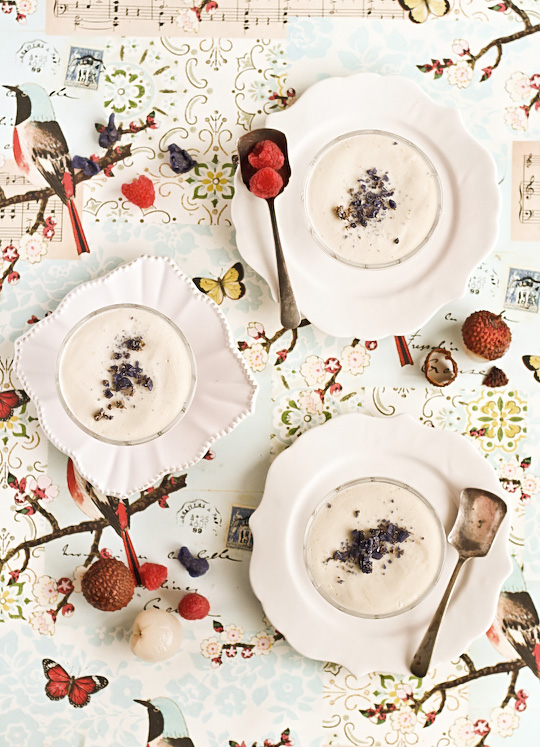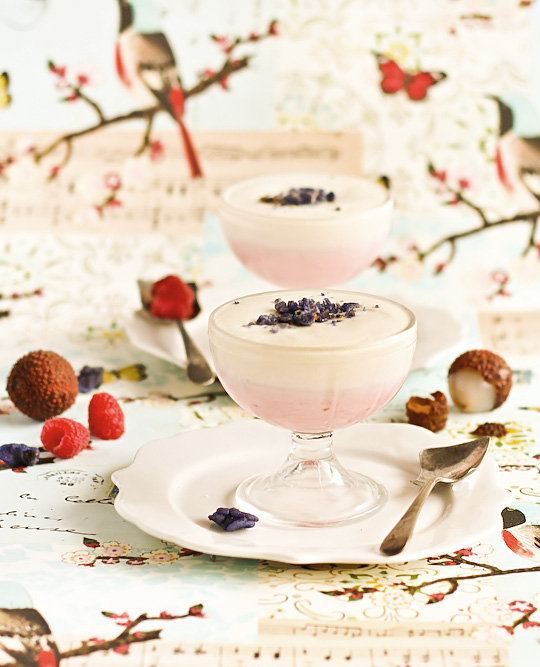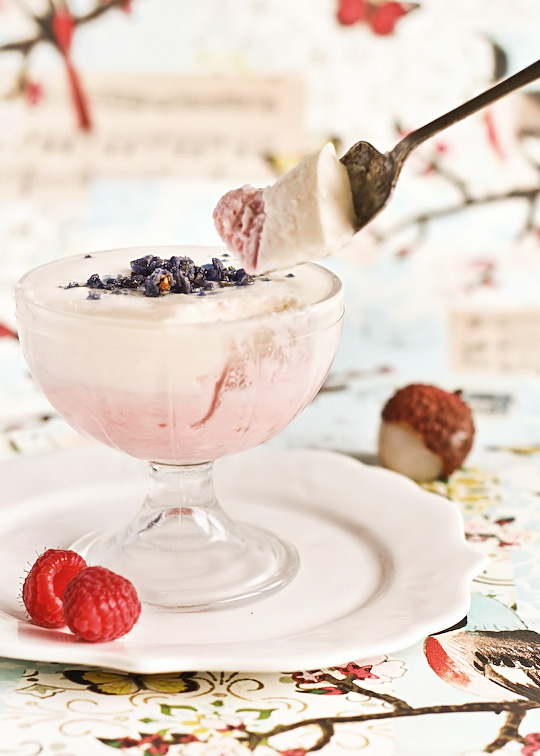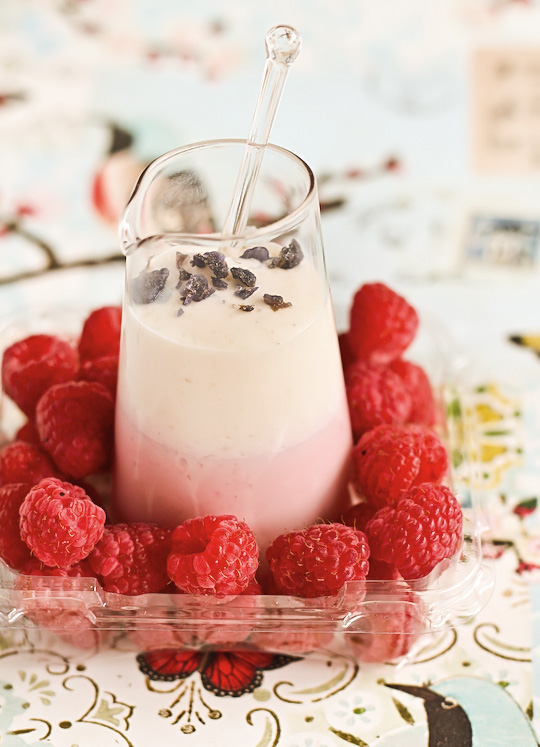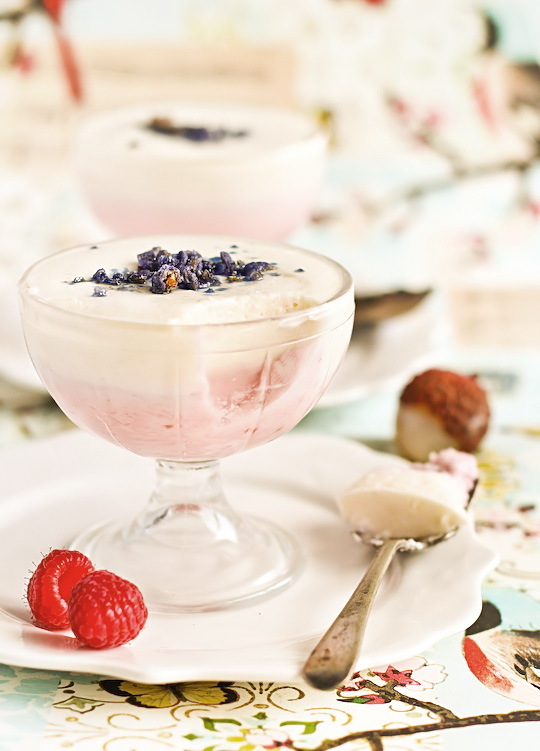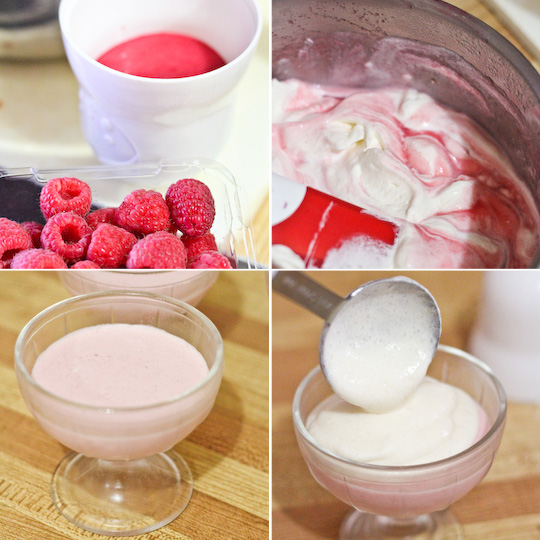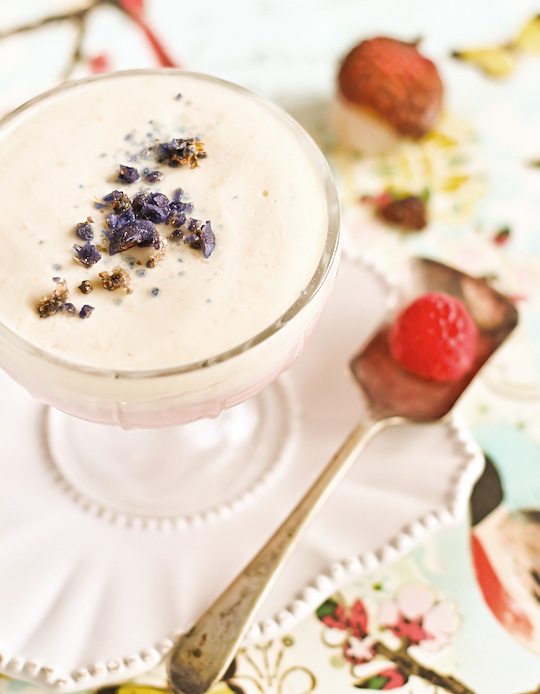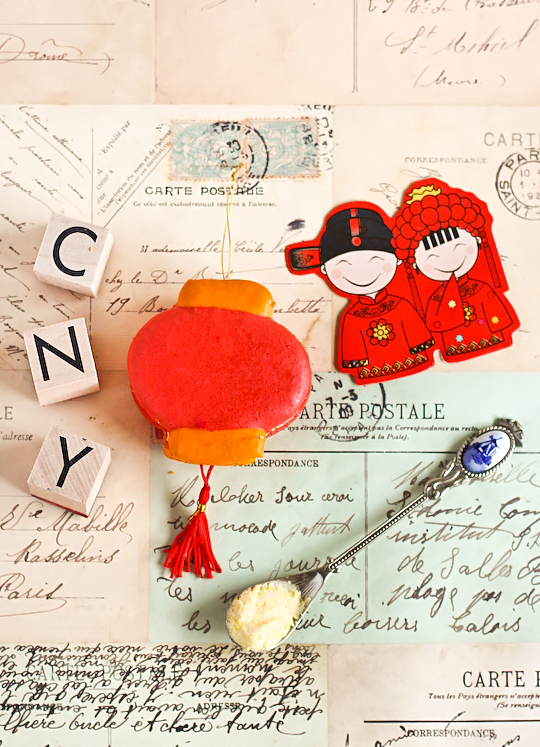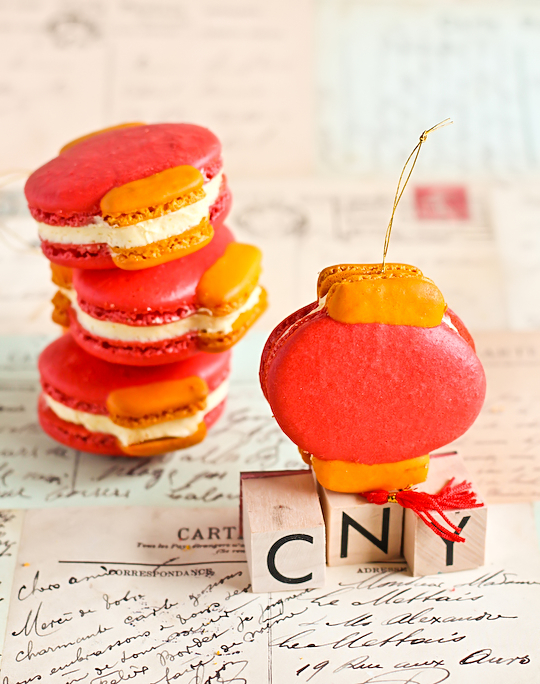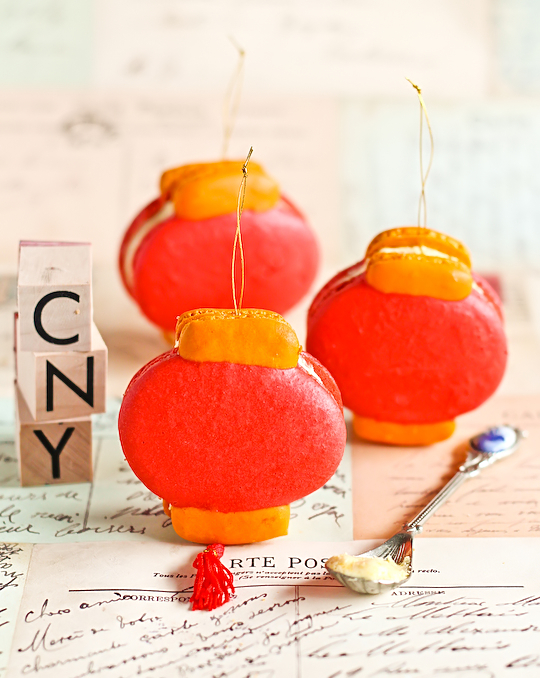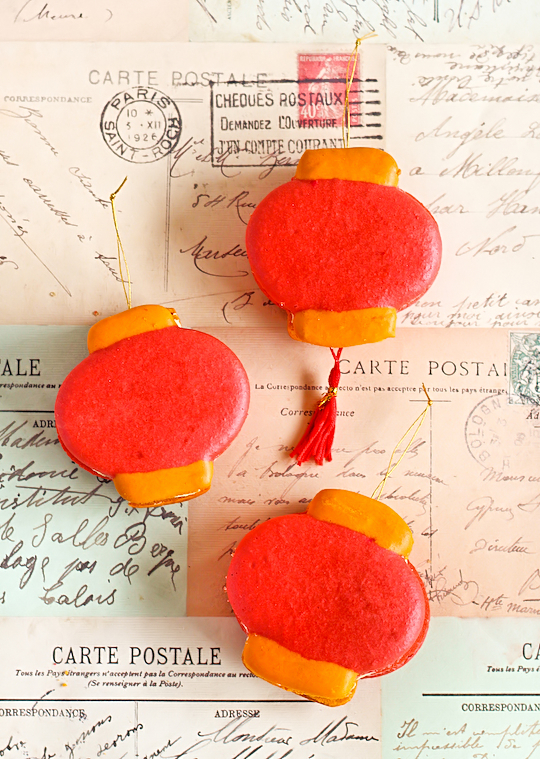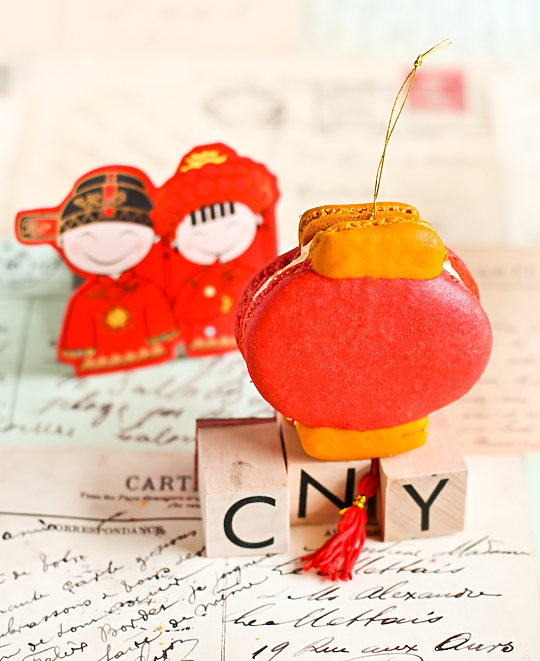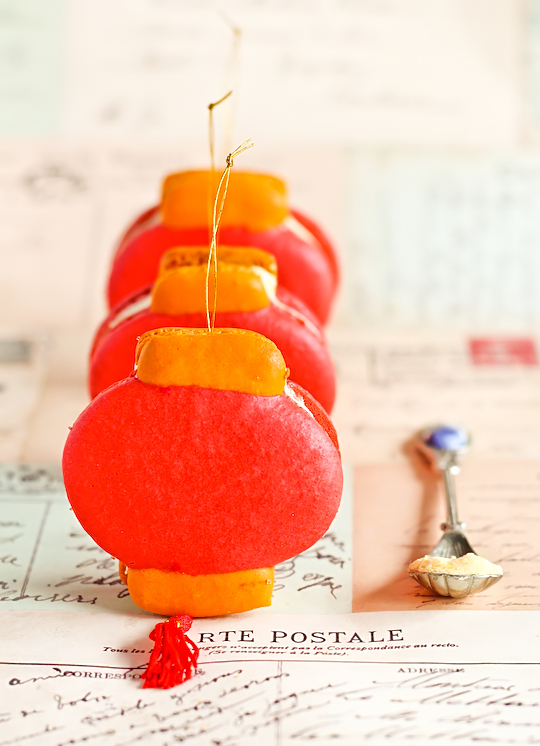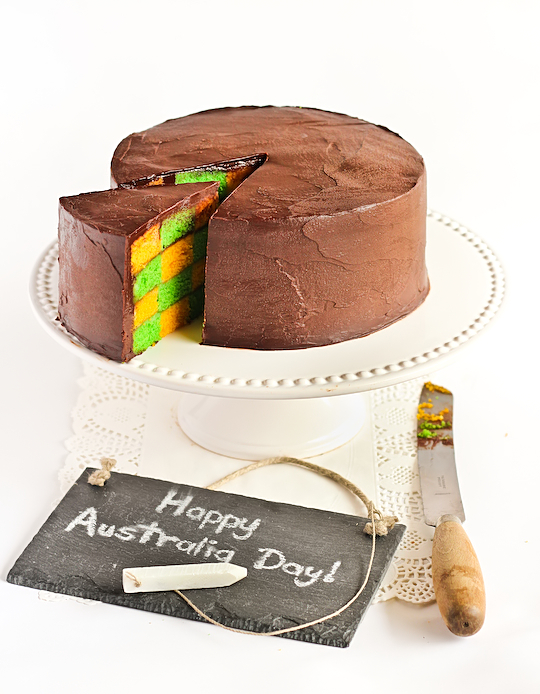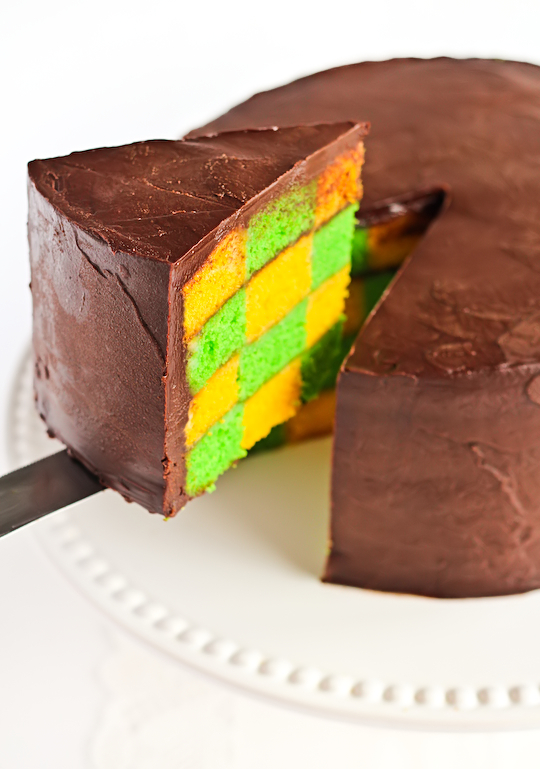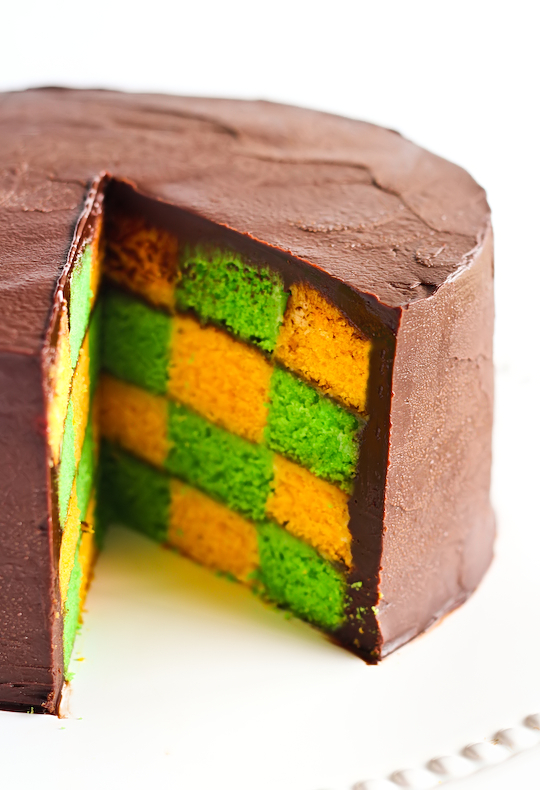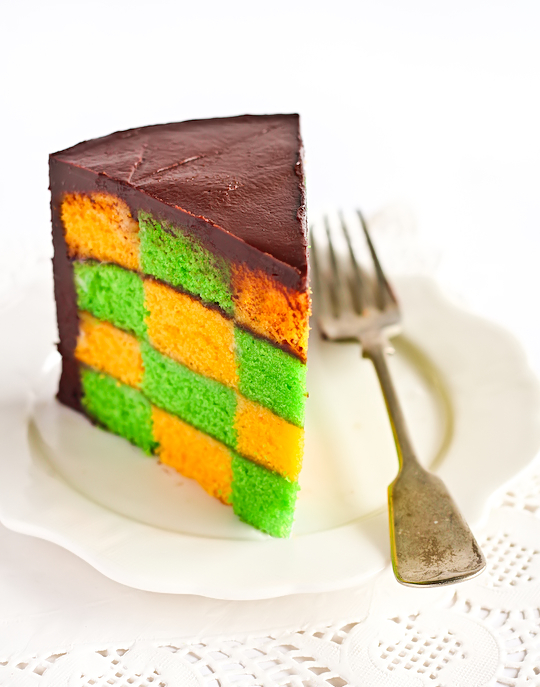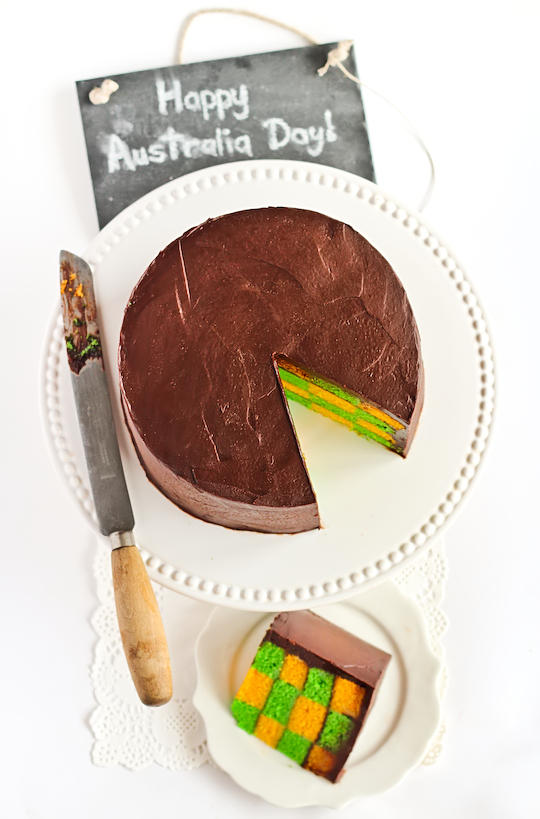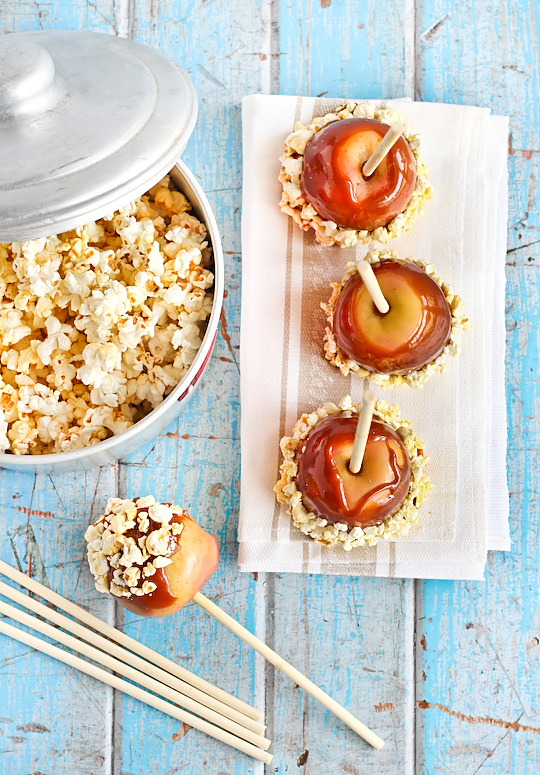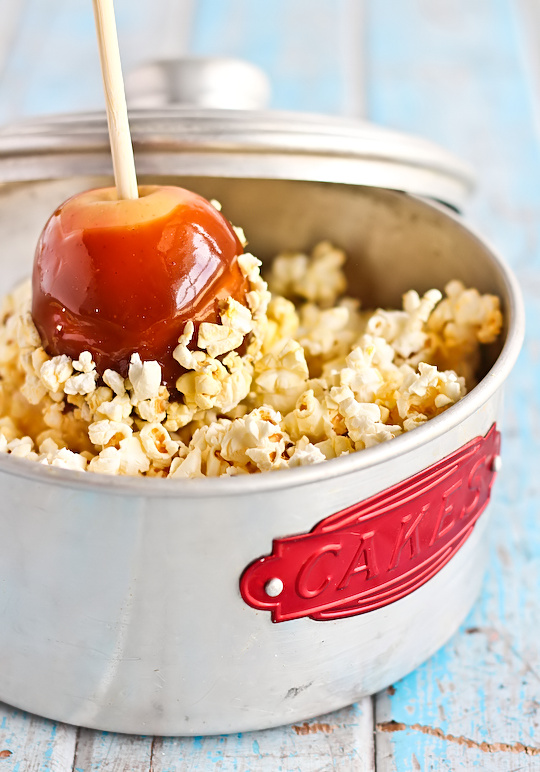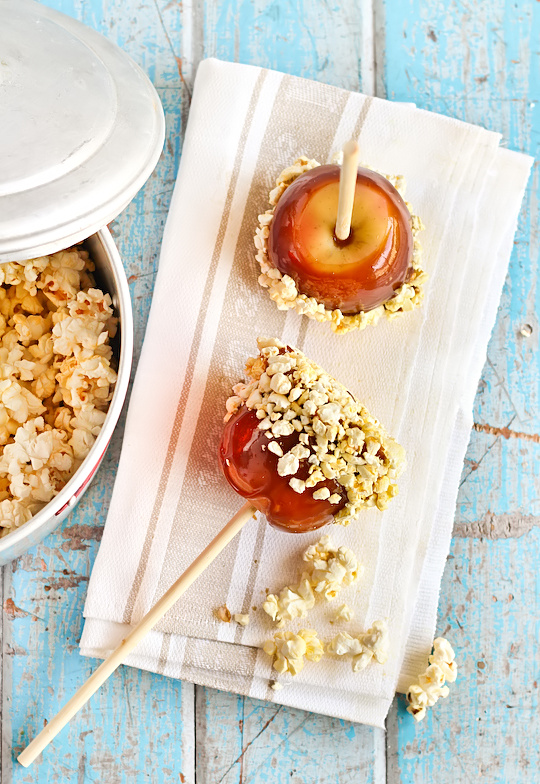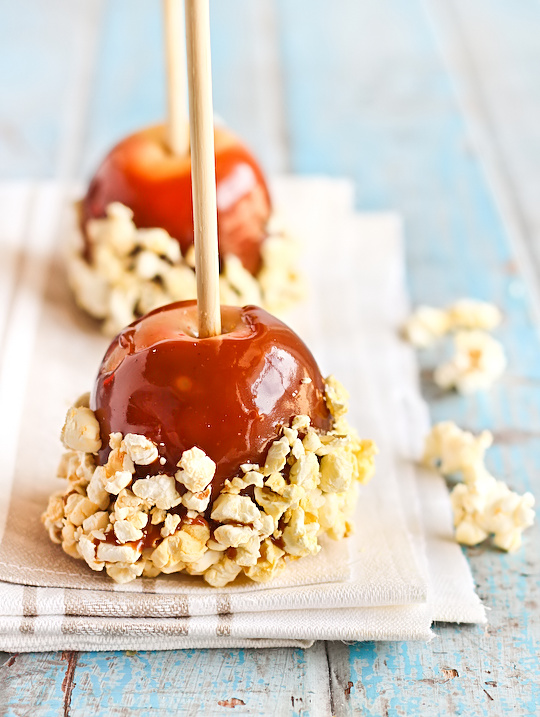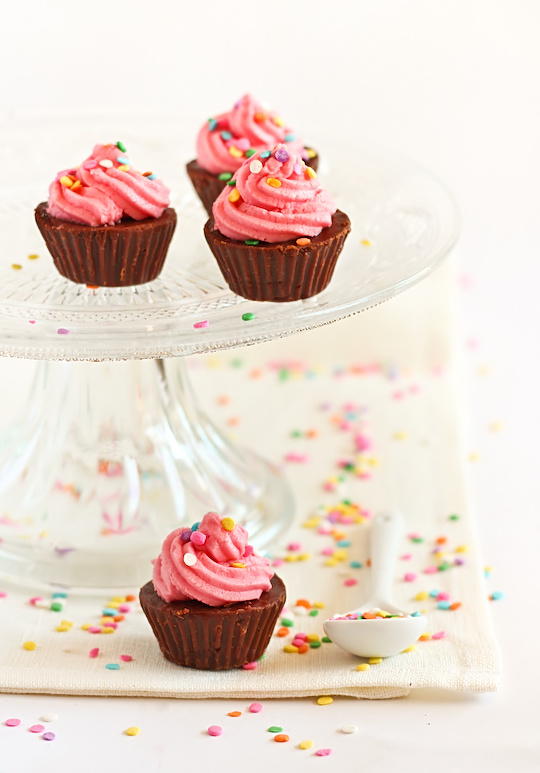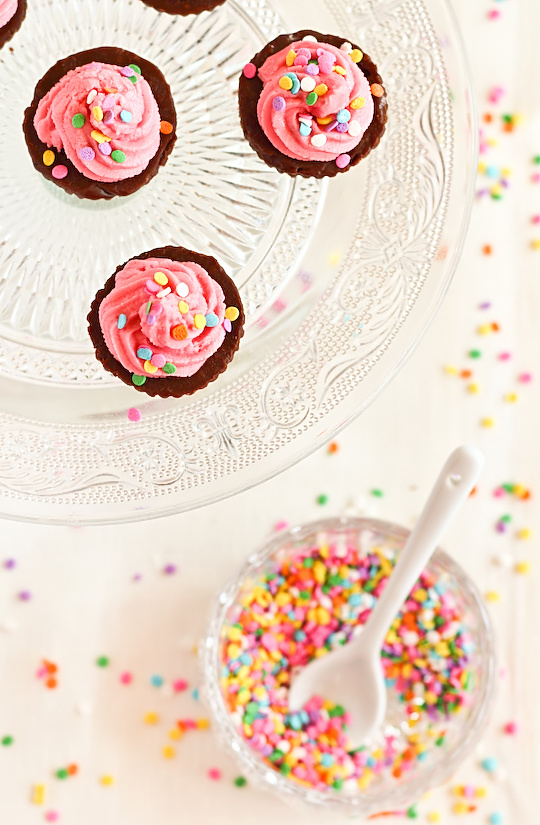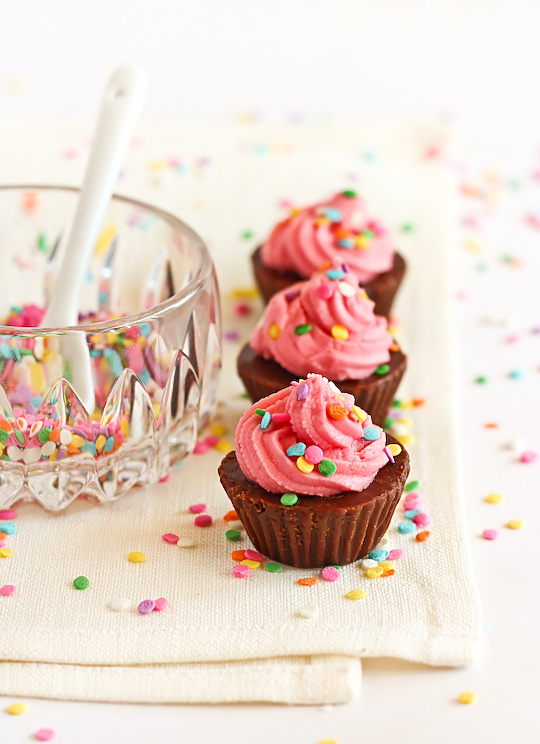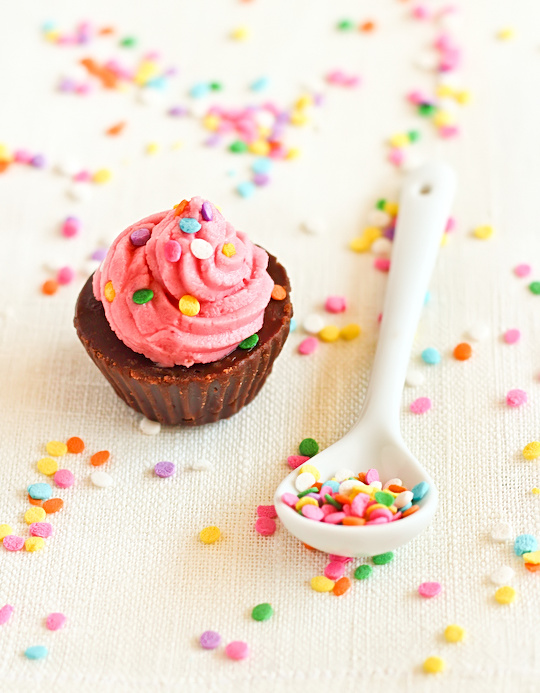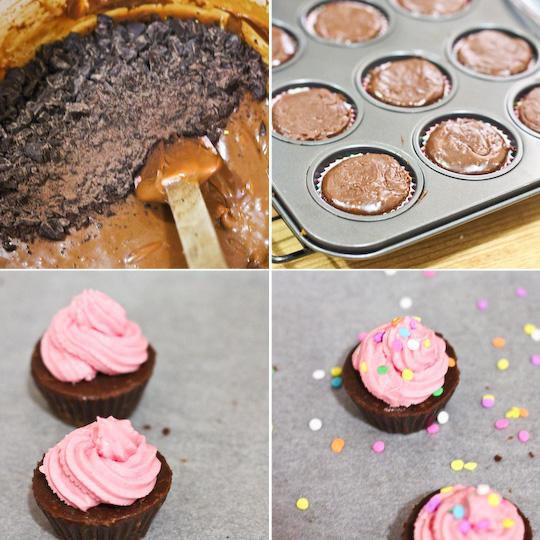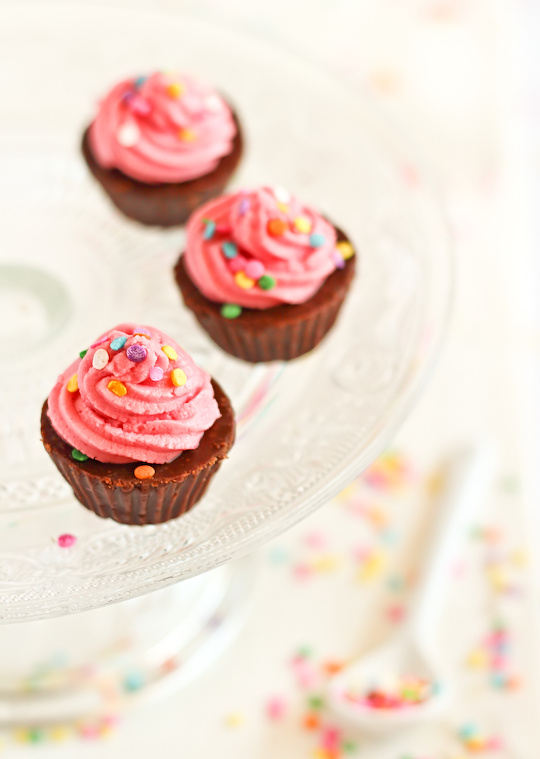After all the festivities that we've had over the last month, it felt like a good time to step back from doing gimmicky stuff and do something easy and pretty instead. This dessert seemed like a perfect way to enjoy the summer fruit that has been available in Sydney at the moment, but it also has the added bonus of being just as delicious when made with frozen and canned fruit for those who aren't as lucky as us Sydney-siders. I adapted one of my favourite past recipes; a Watermelon & Honeydew Mousse, to make this light and girly Lychee & Raspberry Mousse with Candied Violets.
Originally I wanted to do this dessert with homemade candied rose petals to make it a total Pierre Hermé ispahan-inspired dessert, but I wasn't able to get my hands on pesticide free roses in time. So I settled for some crushed candied violets instead, which was fine with me because I love the subtle floral flavour and gorgeous purple colour of the violets. I've been holding on to my tiny stash of candied violets with all my stingy Asian stubborness because they are bloody expensive, but I think this dessert was decent enough to use up a few of them. Feel free to adapt this recipe to include a rose element if you prefer!
This is such a simple dessert to whip up, the actual prep time is about 20 minutes, but there's a little bit of waiting time in between the prep while you let things cool and set. I used fresh raspberries for the raspberry mousse because the ones available at the moment are so cheap and great looking. I realised that recently I've been using raspberries to flavour a lot of my desserts, which I had avoided a lot in the past. I usually get pretty irritated eating fruits that have a lot of tiny seeds, because one of those little seeds inevitably lodges itself in the small gap between two of my back teeth and refuses to budge. But these days I can't resist adding raspberry puree to lots of my recipes because it adds such a rich flavour and colour, and I make sure to strain out as many of those pesky seeds as I can. The raspberry mousse layer is a lovely blush colour with a slightly tart berry flavour.
In my opinion the lychee mousse layer is the star of this dessert. I was surprised by how strong the flavour of the lychees came through in the mousse, it is absolutely divine. It provides a great balance against the more sour raspberry layer, and the violets help to finish it off perfectly. I ended up using canned lychees for my puree because the fresh ones at my supermarket weren't as great as the other ones I've seen around recently, I'm sure the fresh ones would taste even better in this.
I made a few tweaks to the original mousse recipe; taking out some of the gelatine in the hopes it would give it a more delicate texture and completely get rid of the tiny aftertaste of gelatine that I really don't enjoy. The result is this wondefully fluffy mousse, I probably could have reduced the amount of gelatine even more but I was too scared that it wouldn't set. The timing of this super pink and girly dessert might make it perfect for those planning a Valentine's Day meal, though personally I think this dessert will probably be enjoyed more by the girls than the boys. It will definitely be enjoyed a lot more by this girl than her boy :P
Lychee & Raspberry Mousse with Candied Violets
(serves 4-6 people, adapted from my Two Melon Mousse recipe)
For the raspberry mousse:
1 punnet (125g) fresh or frozen raspberries, pureed and strained (makes about 2/3 cup puree)
1 1/2 tsp powdered gelatine
1/8 cup cold water
1/4 cup (60g) sugar
2 tsp lemon juice
1/4 tsp pure vanilla extract
1/2 cup cold pouring cream (min. 35% milk fat unthickened pure cream)
For the lychee mousse:
200g peeled and pitted lychees, pureed and strained (I used 1 can of lychees, which made about 3/4 cup of puree)
1 1/2 tsp powdered gelatine
1/8 cup cold water
1/4 cup (60g) sugar
2 tsp lemon juice
1/4 tsp pure vanilla extract
1/2 cup cold pouring cream (min. 35% milk fat unthickened pure cream)
To decorate: 1 crushed candied violet per serve, or make your own candied rose petals (make sure they are pesticide free)
Prepare the raspberry mousse first; place gelatine and cold water in a small bowl to allow the gelatine to soften. Add about 1/3 cup of water to the raspberry puree, or enough so that it makes 1 cup liquid in total. Place this in a medium saucepan with sugar and lemon juice and heat on low until the sugar dissolves completely. Add softened gelatine to the mixture, heat and stir until the gelatine dissolves completely. Remove from the heat and chill mixture in fridge until it reaches just below room temperature and is starting to thicken. Whip cream in a large mixing bowl to soft peaks. Add vanilla to raspberry mixture and then fold whipped cream into it until all the lumps are removed. Pour into 4-6 individual serving glasses, half-filling each of them, and chill in the fridge until set, at least 45 mins.
Prepare the lychee mousse; repeat same steps for raspberry mousse but with lychee puree. Pour over the top of set raspberry mousse and chill until set or overnight. When ready to serve, remove from the fridge about 10 minutes before serving, then sprinkle candied violets over the top of each mousse (don't do it too early or the sugar from the violets will dissolve and stain the top of the mousse blue). Otherwise, you can top it with candied rose petals or fresh raspberries and lychees or whipped cream flavoured with rose water.
Originally I wanted to do this dessert with homemade candied rose petals to make it a total Pierre Hermé ispahan-inspired dessert, but I wasn't able to get my hands on pesticide free roses in time. So I settled for some crushed candied violets instead, which was fine with me because I love the subtle floral flavour and gorgeous purple colour of the violets. I've been holding on to my tiny stash of candied violets with all my stingy Asian stubborness because they are bloody expensive, but I think this dessert was decent enough to use up a few of them. Feel free to adapt this recipe to include a rose element if you prefer!
This is such a simple dessert to whip up, the actual prep time is about 20 minutes, but there's a little bit of waiting time in between the prep while you let things cool and set. I used fresh raspberries for the raspberry mousse because the ones available at the moment are so cheap and great looking. I realised that recently I've been using raspberries to flavour a lot of my desserts, which I had avoided a lot in the past. I usually get pretty irritated eating fruits that have a lot of tiny seeds, because one of those little seeds inevitably lodges itself in the small gap between two of my back teeth and refuses to budge. But these days I can't resist adding raspberry puree to lots of my recipes because it adds such a rich flavour and colour, and I make sure to strain out as many of those pesky seeds as I can. The raspberry mousse layer is a lovely blush colour with a slightly tart berry flavour.
In my opinion the lychee mousse layer is the star of this dessert. I was surprised by how strong the flavour of the lychees came through in the mousse, it is absolutely divine. It provides a great balance against the more sour raspberry layer, and the violets help to finish it off perfectly. I ended up using canned lychees for my puree because the fresh ones at my supermarket weren't as great as the other ones I've seen around recently, I'm sure the fresh ones would taste even better in this.
I made a few tweaks to the original mousse recipe; taking out some of the gelatine in the hopes it would give it a more delicate texture and completely get rid of the tiny aftertaste of gelatine that I really don't enjoy. The result is this wondefully fluffy mousse, I probably could have reduced the amount of gelatine even more but I was too scared that it wouldn't set. The timing of this super pink and girly dessert might make it perfect for those planning a Valentine's Day meal, though personally I think this dessert will probably be enjoyed more by the girls than the boys. It will definitely be enjoyed a lot more by this girl than her boy :P
Lychee & Raspberry Mousse with Candied Violets
(serves 4-6 people, adapted from my Two Melon Mousse recipe)
For the raspberry mousse:
1 punnet (125g) fresh or frozen raspberries, pureed and strained (makes about 2/3 cup puree)
1 1/2 tsp powdered gelatine
1/8 cup cold water
1/4 cup (60g) sugar
2 tsp lemon juice
1/4 tsp pure vanilla extract
1/2 cup cold pouring cream (min. 35% milk fat unthickened pure cream)
For the lychee mousse:
200g peeled and pitted lychees, pureed and strained (I used 1 can of lychees, which made about 3/4 cup of puree)
1 1/2 tsp powdered gelatine
1/8 cup cold water
1/4 cup (60g) sugar
2 tsp lemon juice
1/4 tsp pure vanilla extract
1/2 cup cold pouring cream (min. 35% milk fat unthickened pure cream)
To decorate: 1 crushed candied violet per serve, or make your own candied rose petals (make sure they are pesticide free)
Prepare the raspberry mousse first; place gelatine and cold water in a small bowl to allow the gelatine to soften. Add about 1/3 cup of water to the raspberry puree, or enough so that it makes 1 cup liquid in total. Place this in a medium saucepan with sugar and lemon juice and heat on low until the sugar dissolves completely. Add softened gelatine to the mixture, heat and stir until the gelatine dissolves completely. Remove from the heat and chill mixture in fridge until it reaches just below room temperature and is starting to thicken. Whip cream in a large mixing bowl to soft peaks. Add vanilla to raspberry mixture and then fold whipped cream into it until all the lumps are removed. Pour into 4-6 individual serving glasses, half-filling each of them, and chill in the fridge until set, at least 45 mins.
Prepare the lychee mousse; repeat same steps for raspberry mousse but with lychee puree. Pour over the top of set raspberry mousse and chill until set or overnight. When ready to serve, remove from the fridge about 10 minutes before serving, then sprinkle candied violets over the top of each mousse (don't do it too early or the sugar from the violets will dissolve and stain the top of the mousse blue). Otherwise, you can top it with candied rose petals or fresh raspberries and lychees or whipped cream flavoured with rose water.

